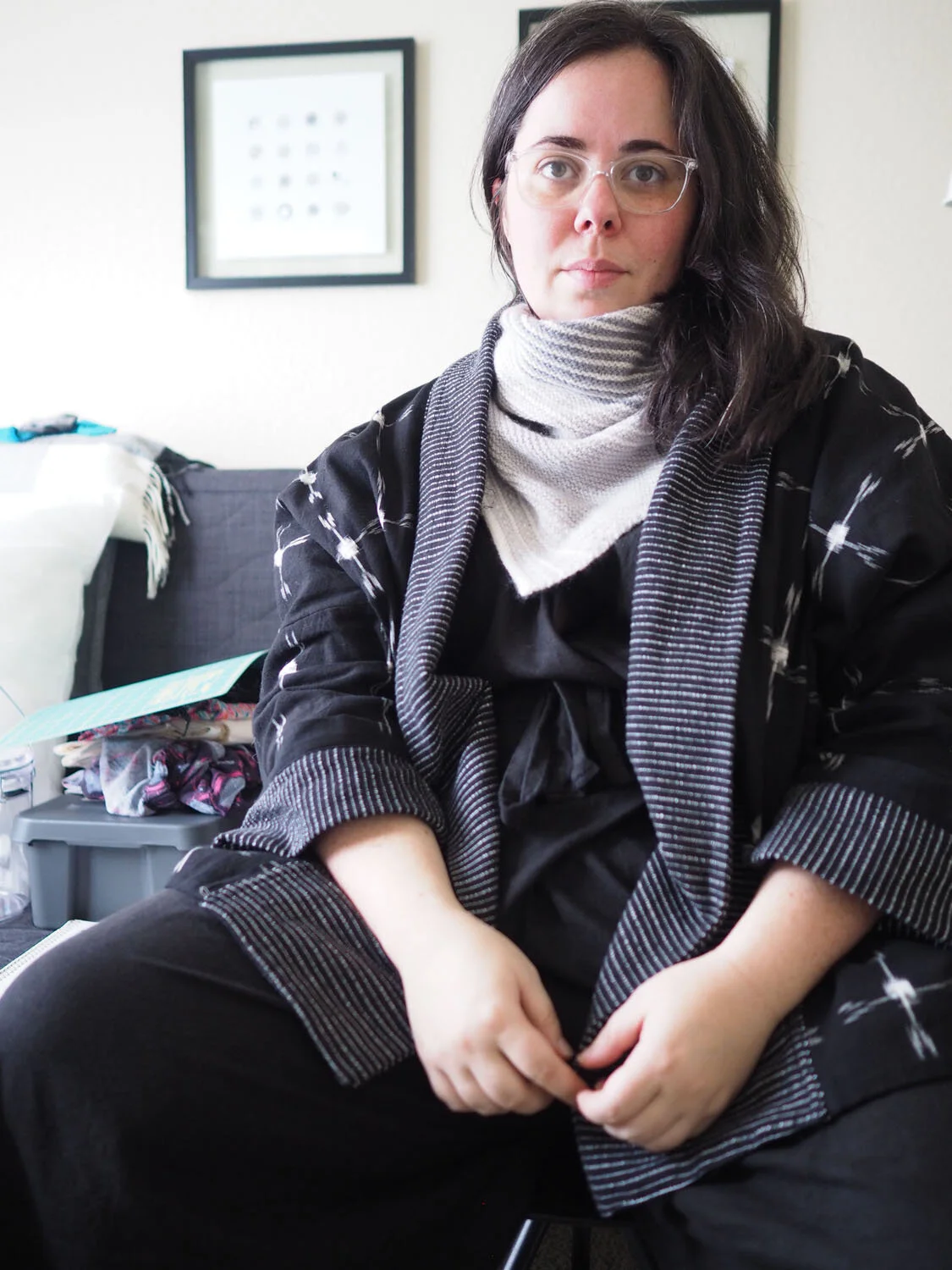My partner likes to joke that they’ve been “coaster trained” since we’ve lived together, and while I appreciate their shared consideration for our furniture, I wanted to make a set of placemats for our new wooden dining table so that we could enjoy it without worrying about hot dishes or condensation.
Pattern: Used the technique from Purl Soho’s Classic Mitered Corner Napkins pattern. NB: you’ll want to cut fabric 2 inches larger than your desired finished dimensions because the mitered edges will take up 1” seam allowance on all sides. Made in Kaufman Yarn-dyed Essex in Shale.
New skills: n/a
Lessons: Using a hot hemmer to make the hems was an upgrade from using a seam gauge.
There’s no standard for placemat sizes or aspect ratios. I went with a 11.5” x 17.5” finished size, which I mocked up using a piece of paper and my cutting mat. Because I have a round dining table, the specific consideration I had was getting the mat to sit close enough to the edge of the table.
Midway through the project I switched to using a bi-level edge stitch foot, and offset the needle position by 2mm. By placing the center of the guide against the hem I was able to achieve a much more even seam than by free-handing.
What I'd do differently: I didn’t square the essex before cutting the placemats. The finished objects turned out just fine, but now that I’ve learned how to square fabric for quilting, I’d do this step before making any rectangular home goods.
Care: Machine wash in cold water. Lay flat to dry, then iron. They’ve also ended up in the dryer and it wasn’t the end of the world.





